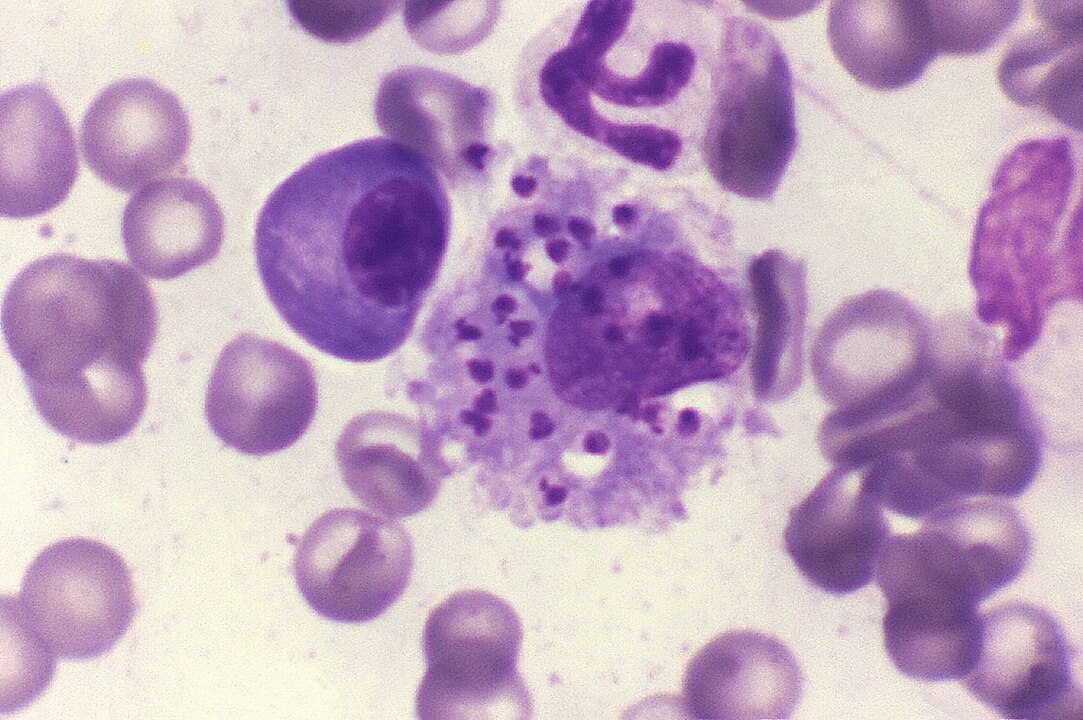

The protozoan L. infantum is the main agent of the most severe and potentially lethal form of leishmaniasis in Brazil (image: Francis W. Chandler/CDC/Wikimedia Commons)
Discovery of a novel class of proteins that help regulate the parasite’s essential cellular functions could lead to the development of more effective drugs against the disease. More than 3,500 new cases are notified each year in Brazil.
Discovery of a novel class of proteins that help regulate the parasite’s essential cellular functions could lead to the development of more effective drugs against the disease. More than 3,500 new cases are notified each year in Brazil.

The protozoan L. infantum is the main agent of the most severe and potentially lethal form of leishmaniasis in Brazil (image: Francis W. Chandler/CDC/Wikimedia Commons)
By Julia Moióli | Agência FAPESP – Researchers at the Federal University of São Carlos (UFSCar), the State University of Campinas (UNICAMP) and the University of São Paulo (USP) in Brazil have characterized for the first time a class of proteins present in the parasite Leishmania infantum and involved in regulating its cell cycle. In an article published in PLOS Pathogens, they describe potential pharmaceutical targets for the treatment of visceral leishmaniasis. Existing therapeutic strategies are considered insufficiently effective.
In eukaryotic organisms, which have cells with a defined nucleus and include all plants and animals, the ubiquitin-proteasome system (UPS) is the main regulator of cell functions via protein breakdown. The UPS orchestrates targeted protein degradation, regulating important aspects of cell biology. Dysfunctions in the UPS are associated with a wide array of diseases, including cancer, Alzheimer’s and Parkinson’s, among others. Understanding the UPS is therefore one of the keys to developing novel approaches to treatment and prevention.
In the case of the protozoan L. infantum, the main agent of the most severe and potentially lethal form of leishmaniasis in Brazil, there is no information in the scientific literature on the workings of the UPS, limiting the possibilities for pharmacological intervention against the parasite.
In this study, which was funded by FAPESP (projects 20/15771-6, 22/02933-3, 15/26722-8, 16/20258-0, 16/21171-6, 19/10753-2, 20/14011-8, 21/10971-0, 21/12464-8, 22/00923-0, 22/15983-9, 22/16270-6 and 23/07193-0), the researchers investigated a class of UPS enzymes in L. infantum – the E3 ubiquitin ligases, or more specifically the Cullin-1-RING (CRL1) ubiquitin ligases, comprising the proteins SKP1, Cullin1, RBX1, and F-box.
Their methods included computer simulation to analyze gene sequences and the structure and dynamics of the proteins, as well as CRISPR-Cas9 gene editing, among several other types of analysis.
They discovered that CRL1 in L. infantum is assembled in association with F-box proteins, in a similar pattern to that found in humans, and labeled it LinfCRL1. They identified six F-box proteins, which they labeled Flp1-6. Laboratory experiments showed that the LinfCRL1(Flp1) complex can transfer ubiquitin, proving its functionality and potential importance for the regulation of cellular processes in the parasite.
They then investigated the roles of each of the genes in LinfCRL1 by using CRISPR-Cas9 to silence them. They found that in the absence of the genes LinfSKP1 and LinfRBX1, the parasite failed to develop, suggesting that the genes are essential components for L. infantum.
On the other hand, while the parasite that did not express the gene LinfCUL1 remained viable, its growth and proliferation were deficient owing to cell cycle alterations.
“In sum, these previously unknown genes are potentially essential to the growth and development of L. infantum,” said Felipe Roberti Teixeira, a professor in UFSCar’s Department of Genetics and Evolution and last author of the article.
Pharmacological targets
“When we find genes associated with crucial functions of the parasite, they immediately become potential pharmacological targets. In this particular case, they may be useful to control the parasite’s growth. They’re conserved in practically all species of Leishmania, broadening the applicability of our findings,” Teixeira said.
The next step, which will be part of a project supported by FAPESP, will be characterization of the parasite’s entire ubiquitin-proteasome system, including not just the E3 ligases but also the E1 ligases (which activate ubiquitin), E2 ligases (which transfer ubiquitin to E3), and all genes in the proteasome.
“We’re going to knock out [silence] all of the more than 80 genes in the UPS to find out which ones are essential and modulate the activity of the proteasome so as to identify other pharmacological targets,” he said.
The research was also supported by CAPES, the Brazilian Ministry of Education’s Coordination for the Improvement of Higher Education Personnel. A researcher at the University of Glasgow in the United Kingdom collaborated.
The article “Functional characterization of Cullin-1-RING ubiquitin ligase (CRL1) complex in Leishmania infantum” is at: journals.plos.org/plospathogens/article?id=10.1371/journal.ppat.1012336.
Republish
The Agency FAPESP licenses news via Creative Commons (CC-BY-NC-ND) so that they can be republished free of charge and in a simple way by other digital or printed vehicles. Agência FAPESP must be credited as the source of the content being republished and the name of the reporter (if any) must be attributed. Using the HMTL button below allows compliance with these rules, detailed in Digital Republishing Policy FAPESP.





